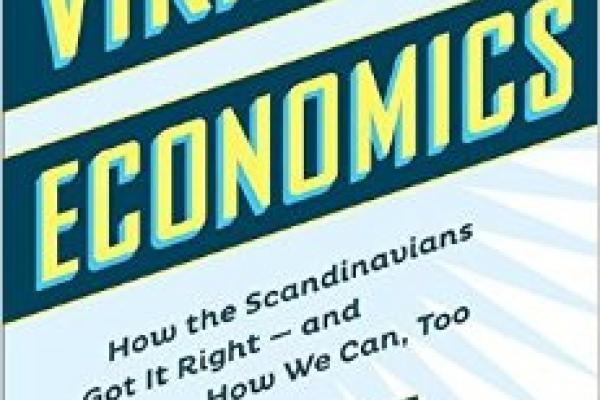WHAT WOULD IT be like here in the United States if our society were more like Scandinavia? Well, our children and grandchildren would be able to get free, high-quality education from preschool through college. They, and every other U.S. citizen, could get good, free medical care. They would be guaranteed a 40-hour workweek and at minimum a month’s paid vacation. Should they lose their job, they could count on comprehensive support through the nation’s elaborate social safety net, including job retraining and, if needed, help with relocation. At retirement, they would be guaranteed a pension providing basic security, regardless of previous earnings or contributions they’d paid in.
They probably would be unionized. The board of directors of any business they worked for, by law, would be at least 40 percent women. If the U.S. government had become like Sweden’s, our president’s cabinet would have an equal number of women and men.
George Lakey, author of Viking Economics, does not believe that Scandinavian countries are utopias—he points out mistakes they’ve made and the challenges they still face (for example, fervent debates over immigration policy). But he does make and support the dramatic claim that the four countries mentioned in his book—Sweden, Norway, Iceland, and Denmark—“have created the clearest sustained model of democracy, equality, environmental justice, shared prosperity, and individual freedom in history.”
In this scholarly but easy-to-read book, laced with humor and intriguing stories, you’ll learn how change-minded Scandinavians, frequently facing determined—sometimes violent—opposition, used effective and creative nonviolent methods (including strikes, boycotts, street demonstrations, study circles, and thousands of co-ops) to organize the powerful grassroots movements and political parties that built such exemplary societies.
The most eye-opening information, at least for U.S. readers, will be the realization that Nordic countries were not always so exemplary.
“Oh sure,” skeptics will scoff, “when you have small, homogeneous societies like theirs, it’s a lot easier to agree on positive social changes than, say, in a larger and more racially diverse and contentious country such as the U.S.”
“Wrong!” says Viking Economics. A century ago, Lakey explains, an economic elite ran each Nordic country. There was extensive poverty, lack of work, an enormous gap between rich and poor, even famines. To escape these conditions, Scandinavians emigrated to the U.S. in massive numbers: 1 million Swedes (1868-1914), 800,000 Norwegians (1825-1925), and 300,000 Danes (1820-1920).
It took many years of struggle and the kind of organizing described above to create the admirable societies we see today. While acknowledging the limitations of comparisons, Lakey argues that we could do the same. The book is sprinkled with dozens of how-to-do-it ideas on this crucial subject.
Most recently a professor at Swarthmore College, Lakey is one of the world’s leading interpreters of the power of nonviolent direct action and campaign-building. He has led 1,500 workshops on five continents on the topic. But he is known just as much as an activist, helping to create organizations to address issues of peace, justice, basic social change, and environmental sanity. He has participated in hundreds of nonviolent campaigns to address these and other issues. (I have known Lakey for more than 50 years. Our common Quaker faith first brought us together, often in peace demonstrations, some of which led to sharing a jail cell.)
We would do well to study, discuss, and learn from Viking Economics —and to try the book’s ideas in our own campaigns to forge an American social, political, and economic system that better reflects biblical values of human dignity, social justice, and the common good.

Got something to say about what you're reading? We value your feedback!

